NCERT Solutions for Class 10 Science Chapter 9 – Light – Reflection and Refraction
NCERT Solutions for Class 10 Science Chapter 9 – Light: Reflection and Refraction are essential for understanding key Physics concepts in the CBSE curriculum. These well-structured answers help students grasp topics like laws of reflection and refraction, mirror and lens formulas, and ray diagrams. Designed as per the latest syllabus, these solutions strengthen conceptual clarity and improve exam preparation. Ideal for revision and practice, they encourage logical thinking and scientific understanding, making them a valuable study tool for scoring well in Class 10 Science exams.
NCERT Solutions For Class 10 Science – Light Reflection and Refraction – Exercise Images
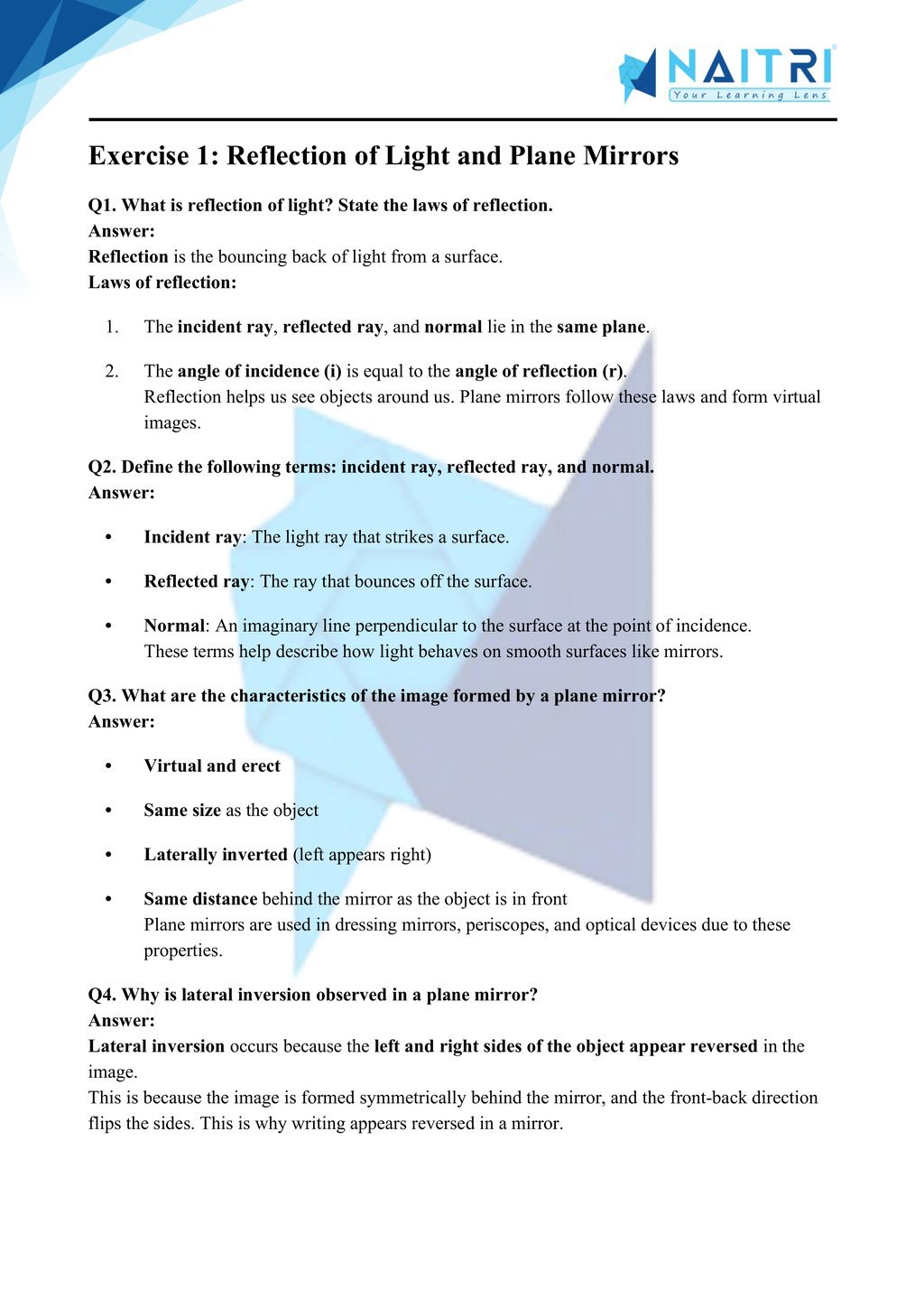
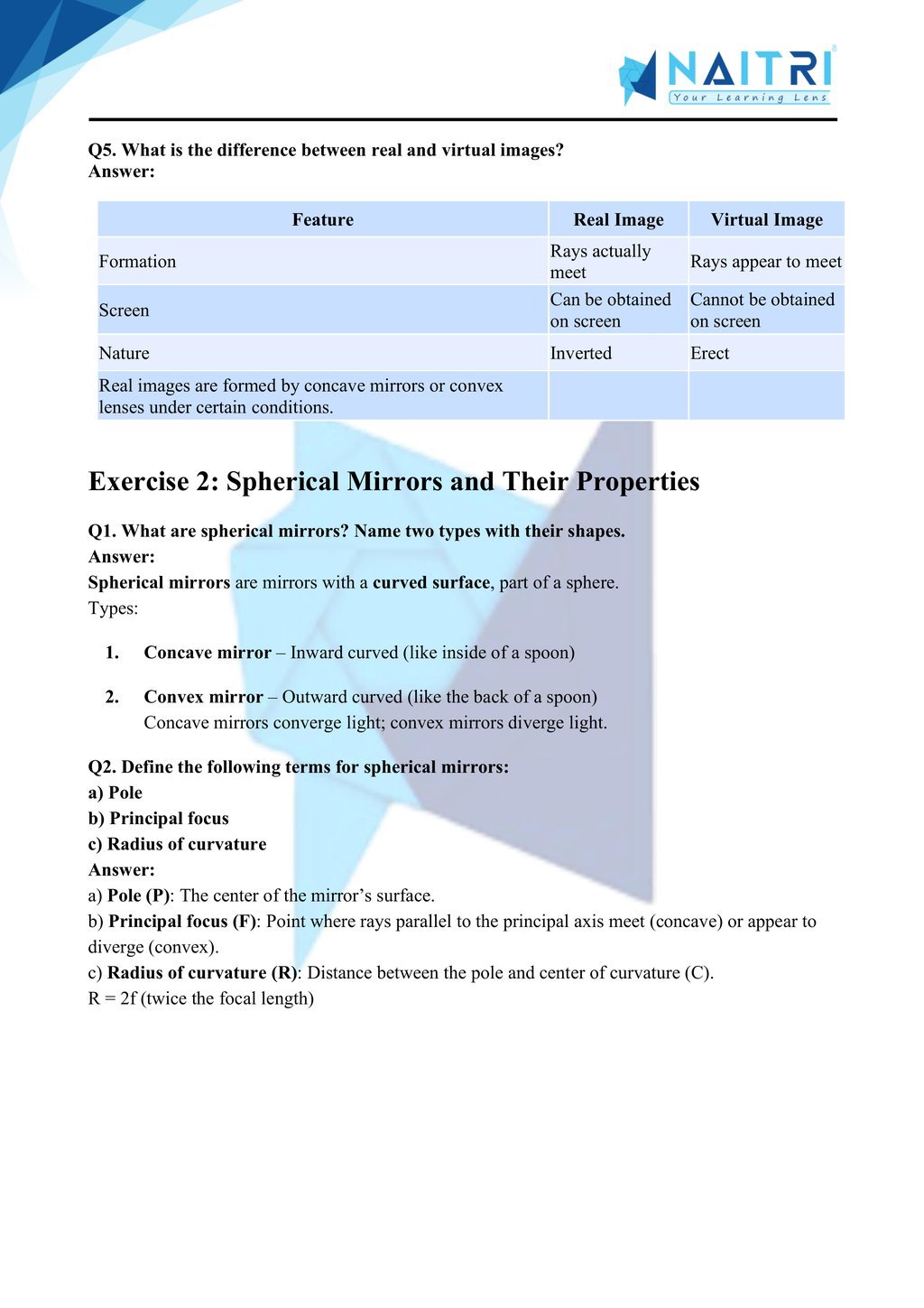
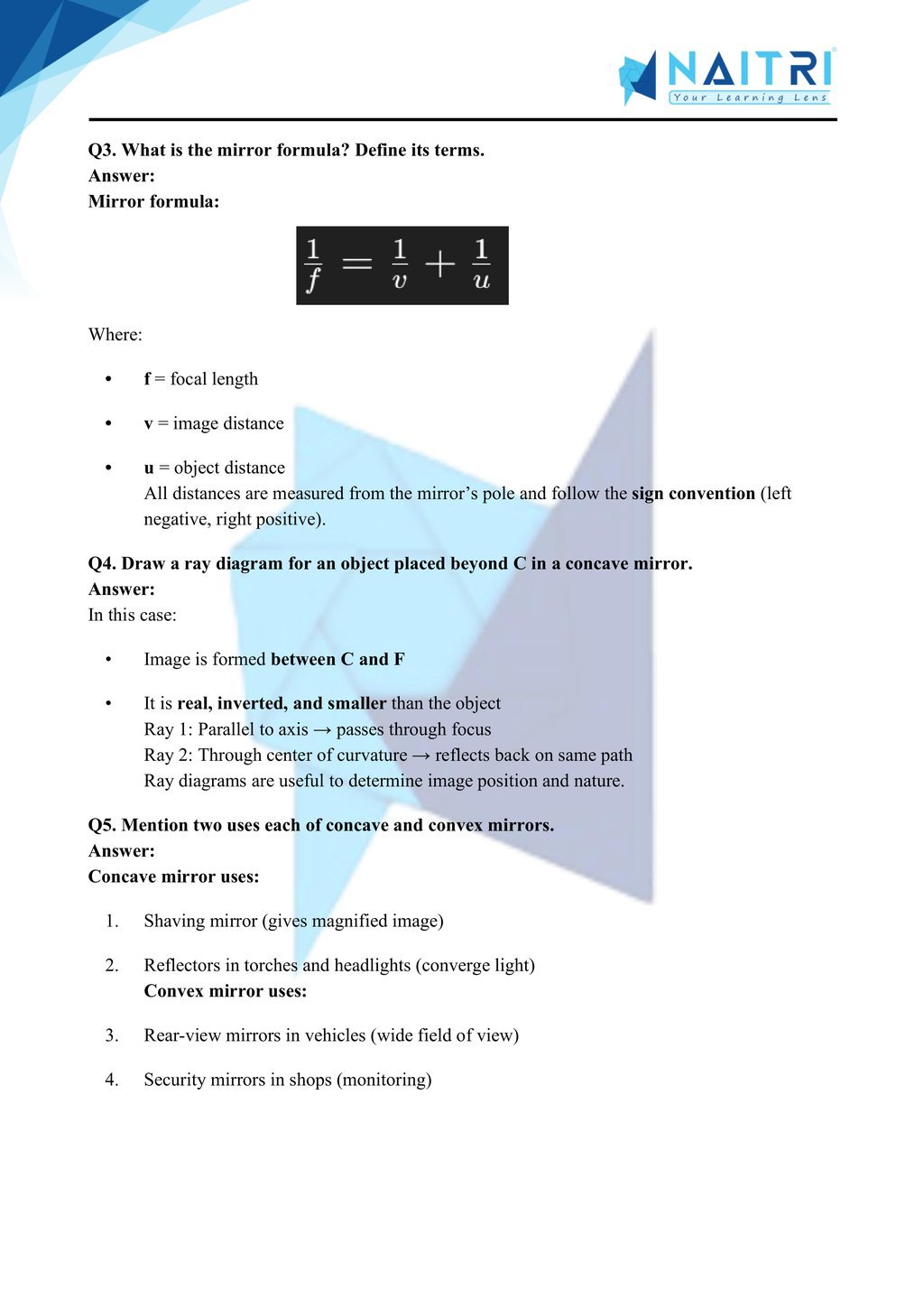
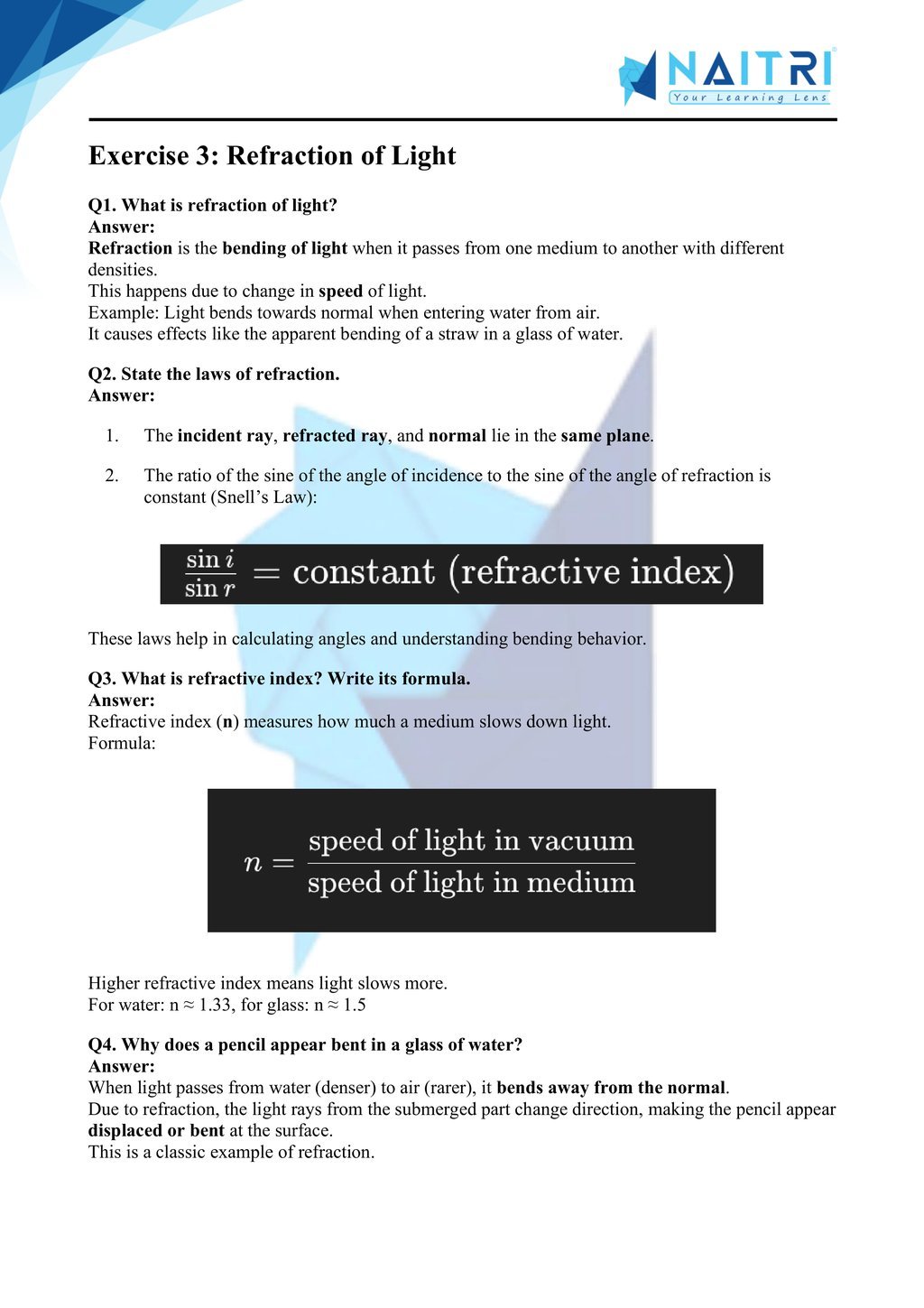
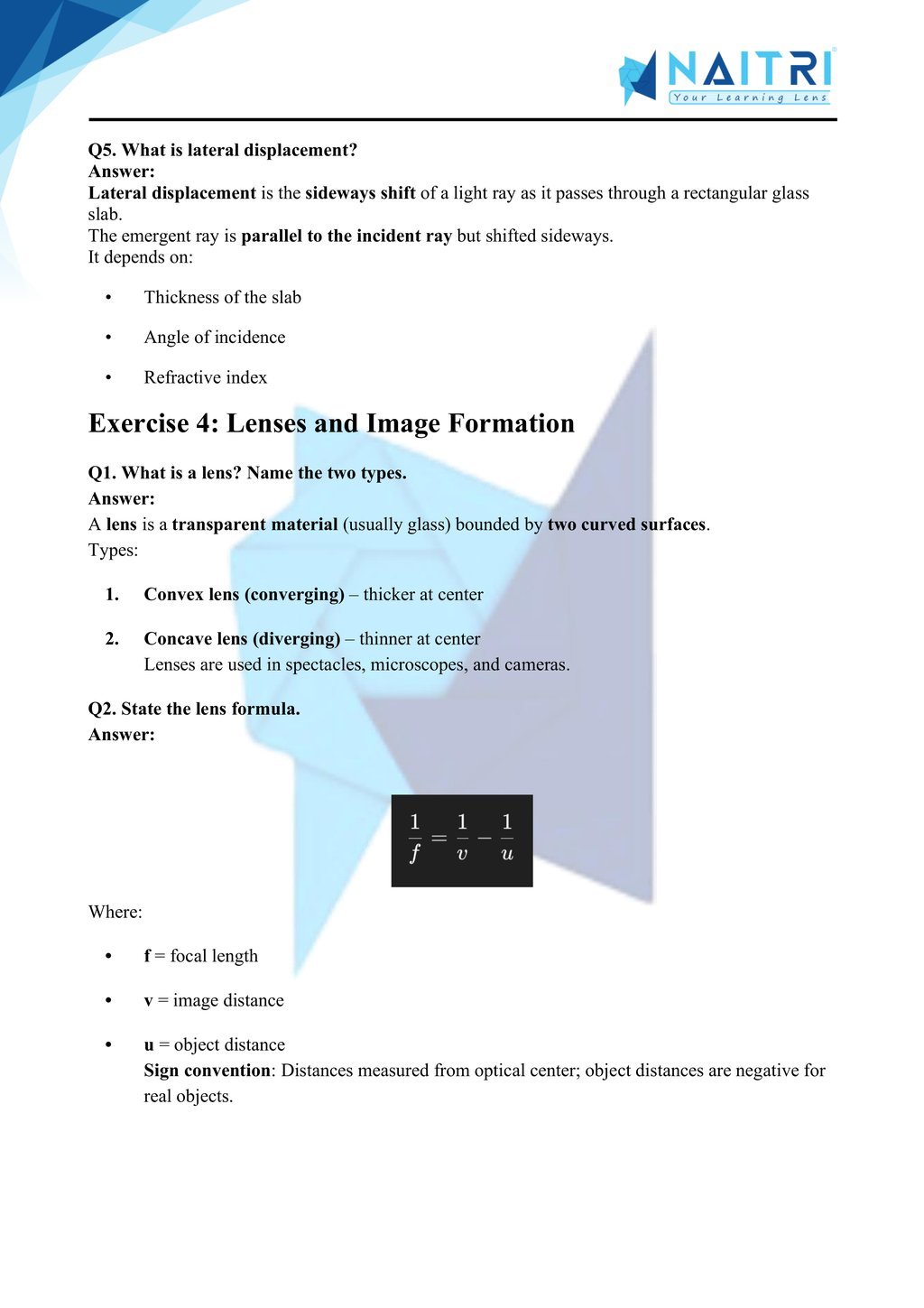
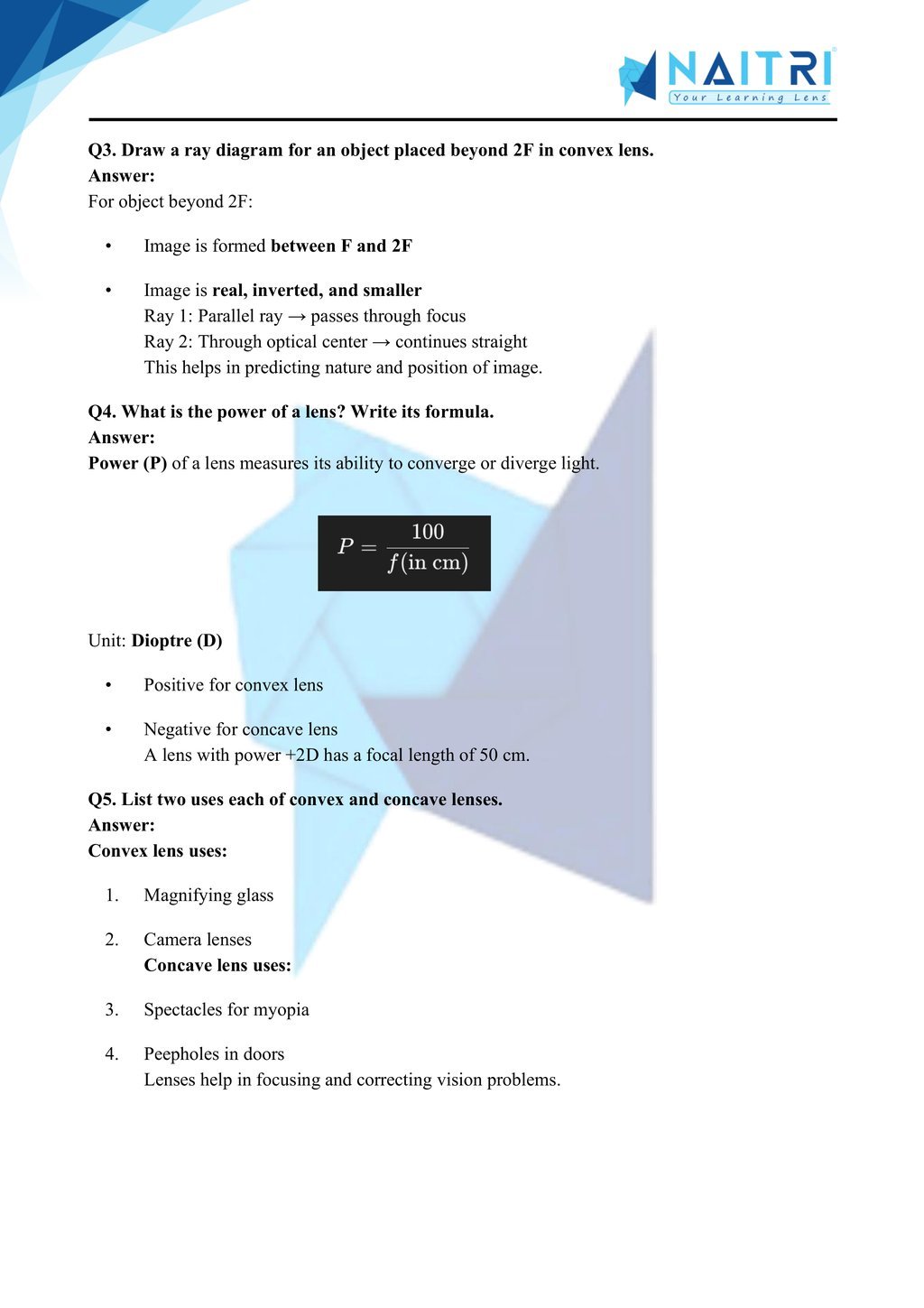
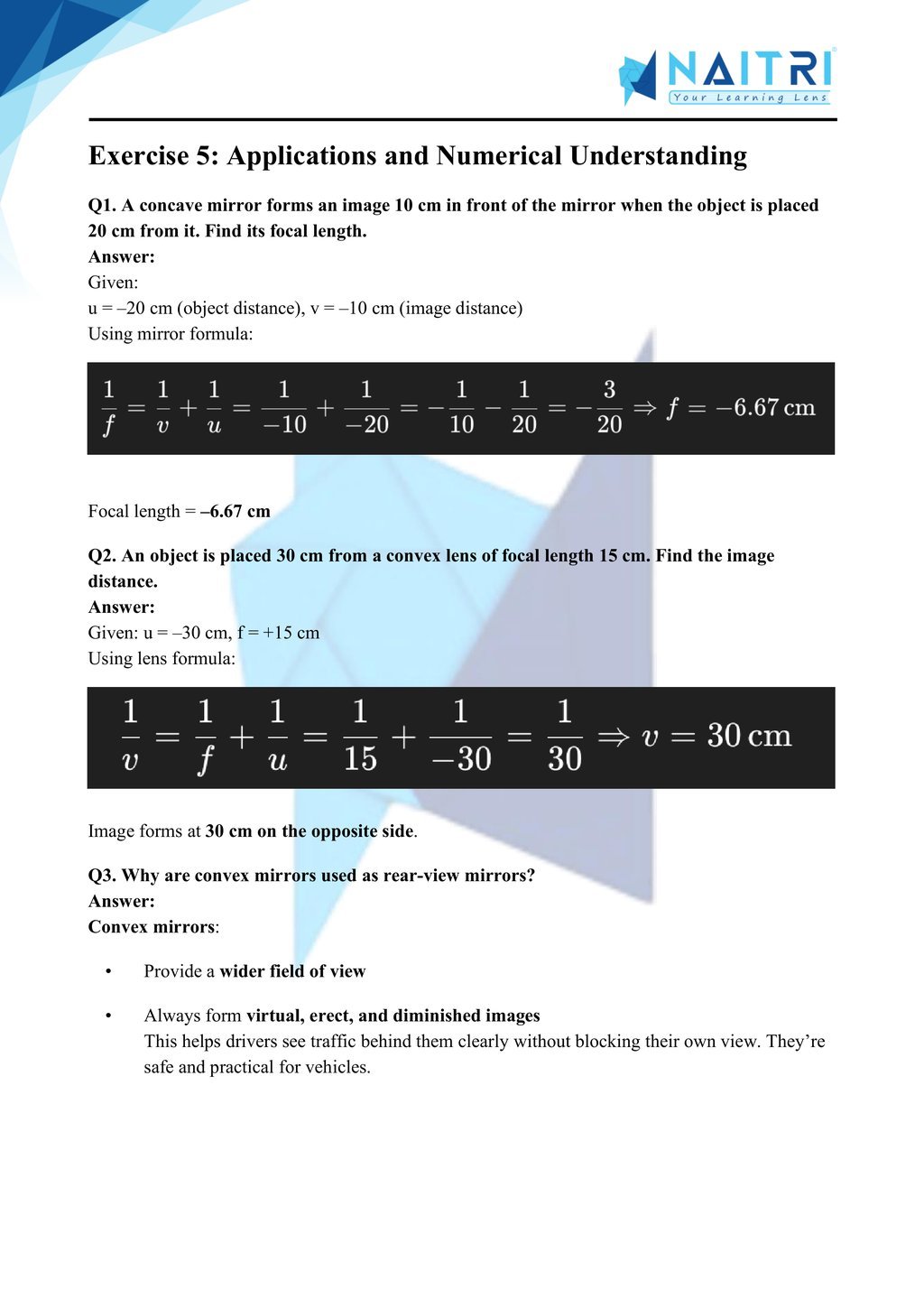
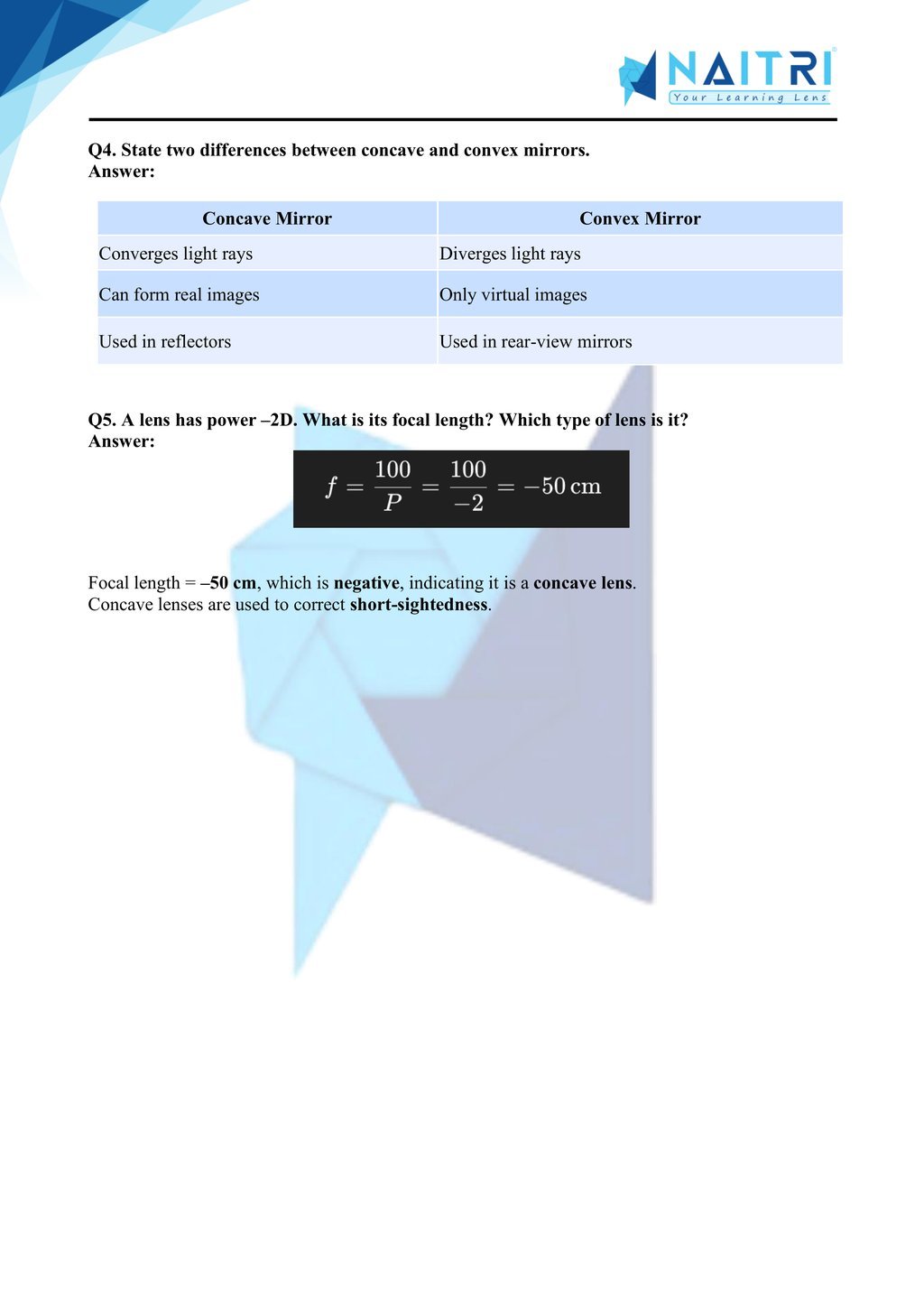
Experience Science Like Never Before – With AR!
Understanding Light – Reflection and Refraction is now more exciting and immersive! With the NAITRI App, you can explore complex science concepts through Augmented Reality (AR). See light rays bounce, bend, and focus through lenses and mirrors — right in front of you. Our AR-powered lessons make learning interactive, 3D, and fun, helping you retain concepts better and enjoy every topic.



Visualize . Interact . Understand . The future of learning is here
Light: Reflection and Refraction – Important Questions with Answers
1. Define light and mention its nature.
Answer: Light is a form of energy that enables us to see objects. It travels in a straight line and shows dual nature: it behaves as both a wave and a particle.
2. What is reflection of light? State its laws.
Answer: Reflection is the bouncing back of light from a surface. Laws: (1) The incident ray, reflected ray, and normal lie in the same plane. (2) Angle of incidence equals angle of reflection.
3. Differentiate between regular and diffused reflection.
Answer: Regular reflection occurs on smooth surfaces, giving clear images. Diffused reflection happens on rough surfaces, scattering light in many directions, hence no clear image is formed.
4. Draw a ray diagram showing reflection from a plane mirror.
Answer: In reflection, the angle of incidence equals the angle of reflection, and the incident ray, reflected ray, and normal lie in the same plane.
5. State characteristics of images formed by a plane mirror.
Answer: The image is virtual, erect, of same size as object, formed behind the mirror at same distance, and laterally inverted (left appears right and vice versa).
6. Define spherical mirrors and name its types.
Answer: Spherical mirrors are parts of a sphere’s surface. Two types: concave mirror (reflecting surface is inward) and convex mirror (reflecting surface is outward).
7. Define principal axis, pole, and center of curvature of a mirror.
Answer: The principal axis is a straight line passing through the mirror’s center. Pole is the mirror’s center. Center of curvature is the sphere’s center from which mirror is cut.
8. What is focal length of a mirror? How is it related to radius of curvature?
Answer: Focal length is the distance from mirror’s pole to its focus. It is half the radius of curvature: f = R/2.
9. Define image. Differentiate between real and virtual images.
Answer: Image is the optical reproduction of an object. Real image is formed by actual rays, can be seen on a screen. Virtual image is formed by extended rays, not on a screen.
10. What type of mirror is used in headlights and why?
Answer: Concave mirrors are used in headlights as they converge light rays into a strong parallel beam, projecting it far ahead on the road for better visibility.
11. Give mirror formula and define its terms.
Answer: Mirror formula is 1/f = 1/v + 1/u, where f = focal length, v = image distance, u = object distance (all in same unit and sign convention is used).
12. Define magnification and give its formula for mirrors.
Answer: Magnification (m) is the ratio of height of image to height of object. It is also given by m = -v/u (using distances from mirror formula).
13. What is refraction of light?
Answer: Refraction is the bending of light when it passes from one medium to another of different optical density, due to a change in its speed.
14. State laws of refraction.
Answer: (1) The incident ray, refracted ray, and normal all lie in the same plane. (2) The ratio of sine of angle of incidence to sine of angle of refraction is constant (Snell’s Law).
15. Define refractive index and write its formula.
Answer: Refractive index is a measure of how much light bends when entering a new medium. It is given by n = sin i / sin r or n = speed in vacuum / speed in medium.
16. What is lateral inversion in mirrors?
Answer: Lateral inversion is the phenomenon where the left and right sides of an image appear reversed in a plane mirror, while the top and bottom remain the same.
17. Explain total internal reflection with one example.
Answer: When light passes from a denser to rarer medium at an angle greater than the critical angle, it reflects entirely inside the denser medium. Example: Sparkle of diamond or optical fiber communication.
18. Define optical density. How is it different from mass density?
Answer: Optical density refers to how much a material slows down light. It is unrelated to mass density. A material can be optically denser but not necessarily heavier.
19. What is a lens? Name its two types.
Answer: A lens is a transparent medium bounded by two curved surfaces. Two types: convex (converging) and concave (diverging), used in various optical devices.
20. Draw ray diagram of image formation by a concave mirror when object is placed beyond C.
Answer: The image formed is real, inverted, and smaller in size, located between focus and center of curvature.
21. Write lens formula and define terms.
Answer: Lens formula is 1/f = 1/v – 1/u, where f is focal length, v is image distance, and u is object distance. The sign convention should be properly followed.
22. What is power of a lens? Give its unit.
Answer: Power of a lens (P) indicates its ability to converge or diverge light. It is reciprocal of focal length in meters. P = 100/f (cm), and its unit is diopter (D).
23. A concave mirror forms an image 20 cm in front of it of an object placed 30 cm from the mirror. Find focal length.
Answer: Using mirror formula: 1/f = 1/v + 1/u = 1/(-20) + 1/(-30) = -1/12 → f = -12 cm. So, focal length is -12 cm.
24. Why does a pencil appear bent in water?
Answer: Due to refraction of light at the water-air interface, light rays bend, making the pencil appear displaced at the boundary, an optical illusion.
25. Why are concave lenses used in spectacles for myopia?
Answer: Concave lenses diverge incoming light rays, helping them focus correctly on the retina in myopic (short-sighted) eyes, allowing distant objects to be seen clearly.
Light – Reflection and Refraction explores the behavior of light as it bounces off surfaces or bends while passing through different media. The chapter covers plane mirrors, spherical mirrors, and lenses, along with image formation rules and ray diagrams. These principles form the core of optical science and are used in devices like telescopes, cameras, and glasses.
Related Chapters You May Like
Download Naitri App
Easy, Visual Learning — Right on Your Phone
Learn with Augmented Reality! The Naitri app makes CBSE and MP Board concepts interactive and fun — even in low-resource settings. Watch lessons, complete homework, take tests, and track progress — all in one place. Anytime. Anywhere.
Available on








